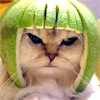“what have I done to deserve this?”
This is the best summary I could come up with:
A small black-and-white Parisian stray, Félicette, flew on a French rocket on a sub-orbital mission in October 1963 that reached an altitude of 154km, taking her to a place where no feline had gone before – or since.
In the early 60s, dogs and monkeys were the animals usually used by scientists to find out exactly how dangerous conditions were in outer space and to assess if humans could survive trips beyond the edge of Earth’s atmosphere.
In putting Félicette in one of its rockets, France added a new species to the list of creatures that scientists had already hurled into space, a roll-call that has since been swelled over subsequent decades by the addition of some very unlikely animal astronauts.
In fact, the blasting of animals into space has a surprisingly long pedigree, going back to the late 1940s when US scientists selected a very humble lifeform to be the first creatures to soar beyond our atmosphere.
Nevertheless, there was criticism of the mission, with the UK National Canine Defence League calling on all dog owners to observe a minute’s silence on each day that Laika remained in space.
Another ISS project, highlighted by Foster, involved mice that spent 90 days there as part of a study to see how sleep schedules and guts respond to being in space for so long.
The original article contains 1,255 words, the summary contains 223 words. Saved 82%. I’m a bot and I’m open source!



